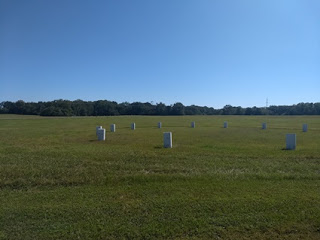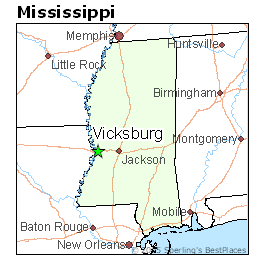We had a vision and this year it came true.
We loved to travel yet seldom did so. That's because it's an ungodly pain in the neck.
I rely on a Hoyer lift to get in and out of bed. It's a great device, the industry standard. Basically a chromed-out engine hoist, it lifts you up in a sling and then rolls underneath the bed to deposit you down. Lots of people use them, but they are terrible to travel with because hotels can't (won't) deal with them. Virtually all hotel beds these days sit on top of box platforms, that block the lift from rolling underneath. Locating an accessible room without a platform bed, or even a hotel staffer or manager who knows whether there is a platform or not, is close to finding a needle in a haystack. Expect fighting and stress. After a while you give up trying. Travel is supposed to be fun, right?

Anyway, the solution for us is an RV. This is like bringing our own hotel room with us. Mabster retired recently, so it was time to do this.
The problem is that most wheelchair accessible vans cannot tow an RV. We were due for a new vehicle anyway, but being 6-2 in a Permobil F3 I had a hard time fitting into most of them in the first place, without even considering the RV. We looked into larger vans too, each with its own problems (i.e., giant expense, unreliable systems).
After an awful lot of homework - way more than I had ever put into any vehicle - we decided to go large. We chose a Nissan NV 3500 cargo van. The large engine's got what it takes to tow, and the cargo doorway is high enough for me to enter without playing limbo. Incredibly, we just happened to find one with only 5,000 miles on it, and it already had a wheelchair lift! (And the central console ripped out, which we were going to do anyway. GMTA.) Our eyes bugged out. Then we saw where it was: all the way across the country in Pasco, Washington. What to do?
Like the lads said, Help! I need somebody. Help! Not just anybody. Help! You know I need someone… Help!
Enter my crazy, incredible brother and his even crazier, incredibler girlfriend. She works for an airline and can fly for free. On Thanksgiving we were putting together the deal by phone, and the next day they jetted out over the Rockies. They landed right in time for our loan to come through. They swooped into the dealership, took possession of the auto freshly inspected by the fantastic guys at Perfection Tire & Auto Repair in Pasco, and left for Idaho just ahead of a snowstorm. It caught up to them in the mountains and they crawled through and all the way across icy Montana. The storm gained on them again in central Iowa (with me hovering over weather maps at my home and barking directions over the phone), so finally they pulled into a hotel. It was a mighty good move: the next morning driving through Iowa and Illinois, cars and trucks littered the roadsides like great buried toys. They stopped counting at 500.
A few hours later we were never so glad to see them, and our new vehicle. It's a white monster that was an obsession to find and an epic voyage to bring back home. So, naturally, we named it Moby Dick.
Next, the vehicle conversion begins.

In the belly of the beast
When we roll up in our cargo van, people surely roll their eyes. This Nissan NV 3500 is a whole different beast from the Chevy Venture minivan we've driven for 15 years. Especially with its 11'7" high-top roof.
But there was a method to our madness: number one, that I could roll through the cargo door with plenty of head clearance. I'm tall but not a giant, and felt incredibly let down by how few choices of converted minivans could accommodate me. These are way too expensive to be in any way uncomfortable. Anyway, item two for us was the ability to tow. Mab had a small RV in mind, and unfortunately a minivan wasn't going to cut it. So we went with the monster, Moby Dick, that fits both bills easily.

This thing really is a cargo van, built for business, with no creature comforts or windows in back.

We were really trying to yank the passenger seat and have me sit up front. The trouble was in my wheelchair that I sit up high, higher than the windows. We looked into fabricating windows at my eye level, but this didn't work. The solution lay elsewhere. On the ceiling, to be exact.

The cargo area is cavernous. Mabster walks around back there with ease. With that kind of space available, there so many possibilities. So we brainstormed with the guys at Lift-Aids in Arlington, TX. We came up with a different way to sit up front.
They fixed a sliding rail along the ceiling, equipped with a Liko-Rall lift. Now I can transfer into the passenger seat in a sling, and enjoy the same comfort, view and safety rig that everyone else takes for granted. It took some practice, but we've got the transfer down now. For trips of an hour or longer, we do the transfer. Otherwise I get strapped in the back.


Stock, the van floor was unadorned corrugated-type steel, covered by a heavy foam overlay that still made for a bumpy ride. Lift-Aids laid down a sturdy sheet of plywood covered by a layer of stick-grip vinyl. It is well-fitted and snug, vastly improving the space for a wheelchair. Great job. (Photos before and after.)
We'll install cargo windows when funds (and safety: still researching this) permit. You have to find the right spots to sit in. This is not a consumer vehicle, not built for comfort, so if you aren't seated and secured right, you're in for a rodeo ride. But these are the trade-offs I bought into, in order to finally travel. We have been waiting a long time for our shot. So while I can do it, let's go!
See you out there. You'll see us coming from a mile away.





 1600 Peterson Ave, Johnston City, Illinois
1600 Peterson Ave, Johnston City, Illinois 










 On a high bluff overlooking the Mississippi 60 miles from
On a high bluff overlooking the Mississippi 60 miles from 


















